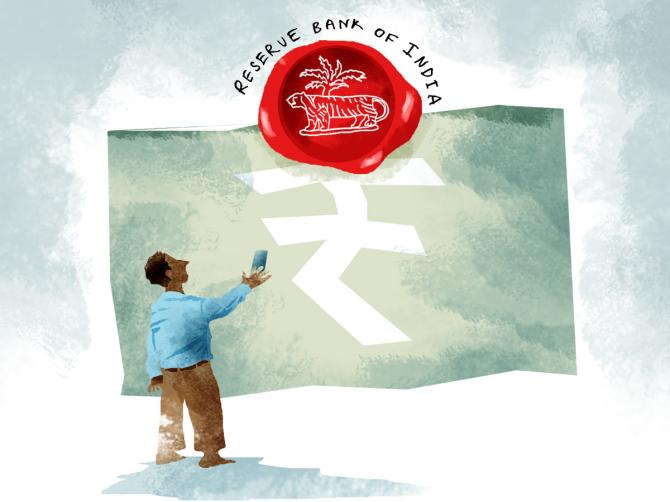A new fintech world is upon us amid funding drought, lower valuations
In January, Visa’s chief executive officer, Al Kelly, said during an earnings call that “there’s been a burst of the balloon in valuations in the fintech world”.
Noting that the trend of lower valuations “is a helpful characteristic of the current environment”, he added: “We will look for capabilities and management teams that will bring more value to Visa than we can bring ourselves.”
Data from KPMG’s Pulse of Fintech H2’22 shows that global fintech investment — via mergers and acquisitions (M&As), private equity (PE) and venture capital (VC) firms — at $164.1 billion in 2022, was down 31 per cent over the year before. Indian fintechs held up better during this timeframe, attracting $6 billion, or a fall of 24 per cent.
“Some of this may have been brought about by regulatory changes, but even if you look at the number of unicorns created here, it is zilch this calendar year so far, compared to the 40 and 20 over the past two (calendar) years”, says Neha Singh, co-founder of Tracxn, a data platform.
Global figures for the year to date (YTD) are not yet available, but the plot on the home turf is headed further south.
Grant Thornton Bharat’s league tables show deals at $1.142 billion, a drop of 53 per cent.
M&A, at $248 million, was up 119 per cent, on the back of Walmart’s $200-million investment in PhonePe for a minority stake.
This deal alone accounted for 81 per cent of M&A deal values; it was the sole in-bound deal witnessed YTD.
PE activity was subdued at $894 million, down 50 per cent.
This is a far cry from 2022, which saw five marquee transactions — Razorpay-Ezetap ($200 million), Perfios-Karza Technologies ($180 million), PhonePe-WealthDesk-OpenQ ($75 million), PineLabs-Setu ($70 million), and CRED-CreditVidya (amount undisclosed).
As TCM Sundaram, founder and vice-chairman of Chiratae Ventures, sees it, there are fintechs with capital and a business model, but others will have to take care of both.
“We are on the cusp of consolidation and the funding boom of the past is well over,” he says.
“From here on, funding and deals will be at potentially lower multiples and lower valuations.”
Yet the deal pipeline could swell as we move ahead, sans the fancy valuations.
Sunil Sangai, founder and CEO of NovaaOne Capital, believes fintechs in India “have reached a pivotal point, with abundant capital availability, high valuations, low-entry barriers, and enthusiastic consumer adoption of digital technologies, all of which have fuelled the industry’s consistent growth over the years.”
Fintechs not only face a funding drought, but lower valuations, more competition, stricter regulatory oversight, and a discerning customer base.
“Through strategic acquisitions and partnerships, they can optimise their resources, expand their offerings, and create innovative solutions.
“And this wave of consolidation is a testament to the industry’s resilience and its commitment to reinvention and adaptation in the face of changing dynamics”, he notes.
There are nuances to what’s set to unfold.
“There would be a number of fintechs which would grow into their last-round valuations and even exceed that, as they have compounded their business scale during this period”, says Ravi Shankar, managing director and head, TMT Coverage, at JPMorgan (India).
But fintechs, which have struggled to grow amid the evolving regulatory backdrop, would have to bite the bullet to stay solvent and grow.
“Capital is the raw material for the lending business, and it’s not advisable to choke growth for want of a higher valuation mark”, he notes.
Shankar’s views find an echo in the Moody’s Investors Service report, Digital Lenders (February 15, 2023).
One of the reasons why VC funding for fintechs dipped in 2022 is a long-standing weakness: heavy reliance on outside capital to fund operations.
Many had negative operating margins and focused on growth at all costs; achieving profitability and positive operating margins was a more distant goal.
This decline in funding had more pronounced negative effects for fintechs using capital for client acquisition rather than building, and investing in valuable or unique infrastructure.
“This type of business model — relying on VCs to subsidise user discounts that would help grow a customer base — is typically unsustainable”, Moody’s noted.
Yet within the fintech space, says Rakesh Pozhath, partner, financial services, at Bain & Company (India), “M&As are happening within payments because of economies of scale, the need for revenue diversification, and enhancing product capabilities.
“Payment companies are not only looking at other such entities, but also at lending, tech and SaaS (software as a service), to make this happen.”
On the chess board
The narrative has changed dramatically since the release of an Reserve Bank of India (RBI) working group’s Report on Digital Lending through Online Platforms and Mobile Apps in November 2021.
Its’ executive summary said pandemic-led growth in digital lending triggered an unbridled extension of financial services to retail individuals, “susceptible to a host of conduct and governance issues”.
And on a larger canvas, digital innovations along with possible entry of “Big Tech” may alter the institutional role played by existing financial and regulated entities.
More specifically, “a fall-out of this may get reflected in blurring of regulated and unregulated financial institutions and activities.
“Such developments spurred by mere commercial considerations would pose regulatory challenges in ensuring monetary and financial stability and in protecting the interests of the customers.”
The regulatory road map was to play out at three levels — regulated entities (REs) of the RBI; other regulated and authorised entities; and unregulated entities, including third-party service providers functioning in the digital financial realm.
According to Shanthi Vijetha, a partner at Grant Thornton Bharat, the fintech ecosystem has been riding the government’s push for a cashless economy and wider acceptance of digital payment solutions.
But increased regulatory scrutiny has brought uncertainty.
“The PayU-BillDesk and PhonePe-ZestMoney deals were called off, adding to concerns among deal makers.
“The inability to raise funds is expected to drive consolidation in the sector to stave off the financial stress in the short to medium term.”
Is it safe to conclude from the number of deals at lower valuations that henceforth, funding will also mirror this trend?
“A funding winter, coupled with regulatory pushback, has resulted in fintechs exploring consolidation.
“Hence, the approach has been conservative, leading to lower valuations for both funding and consolidation activities”, notes Vijetha.
In the wake of the war in Ukraine, the drying up of global liquidity coupled with the post-listing slide in start-up stocks — both fintechs (Paytm) and non-financial players (Nykaa) — have added to the sullenness.
The collapse of Silicon Valley Bank (SVB) has sent a stark message: new risks are coming to the fore in an increasingly interconnected world, and the very idea of what constitutes systemically important institutions may have to be rethought.
Pain in a regulated entity can spread much faster through a jurisdiction’s financial system and across its borders.
SVB now threatens the start-up ecosystem, already gasping for funds owing to raising interest rates and a tighter regulatory framework, and the resultant question marks about the business models of many.
To the credit of the RBI, it’s been proactive when it comes to the intersection of the old and the new.
A particular arrangement under close regulatory scrutiny is the issuance of first-loss default guarantees (FLDG) — a back-up offered by digital platforms (or, other unregulated entities) as guarantee to (regulated) lenders on whose behalf they source business.
After SVB and its impact on start-ups (and the contagion this may trigger), FLDGs’ future may not be rosy.
It is learnt on good authority that the central bank has informally conveyed to REs that it is not comfortable with the arrangements in place now.
The move to seek details on FLDG arrangements came even as there was speculation in banking circles that the RBI was working on a master circular on outsourcing itself.
An aspect often passed over is that legacy REs — be it banks or non-banking financial companies — may also be closing the gap vis-à-vis fintechs.
Unlike fintechs, legacy players were playing off shareholder funds (in the case of banks, depositors’ money as well) and not with PE or VC funding.
We could see a global trend at play here too — banks increasing technology spending (JPMorgan’s is $14 billion annually), or entering into partnerships, like Goldman Sachs with Apple for credit cards.
Whichever way you want to slice and dice the plot from here, a new fintech world is almost upon us.
Source: Read Full Article


